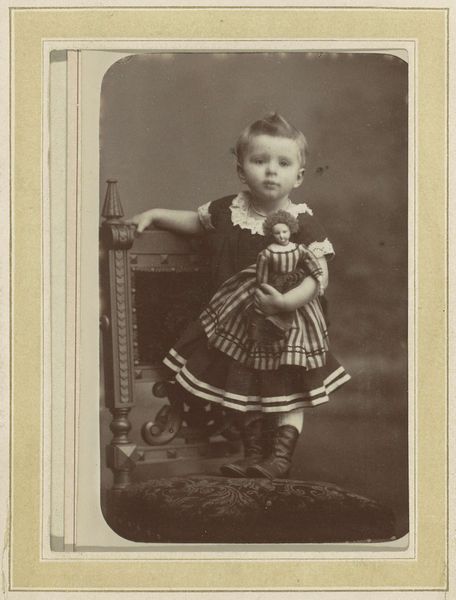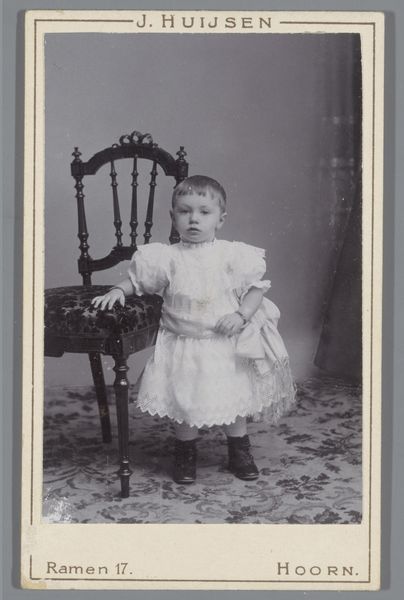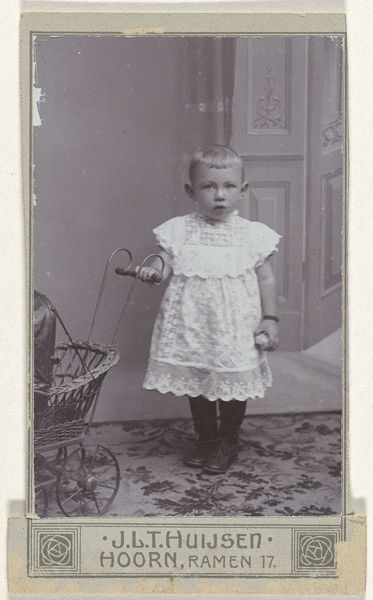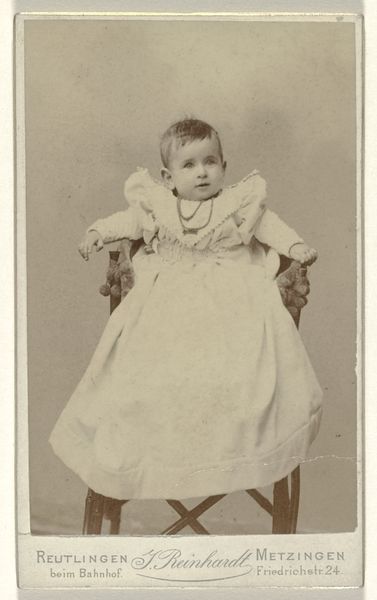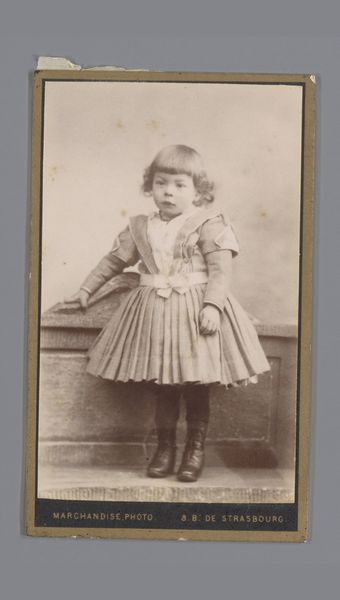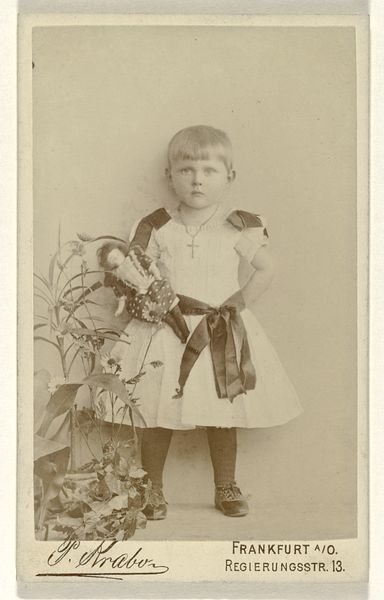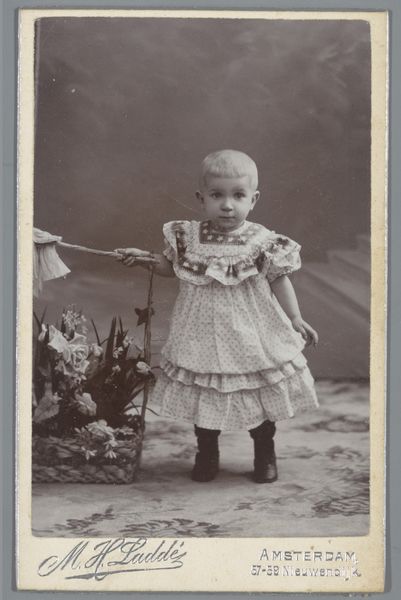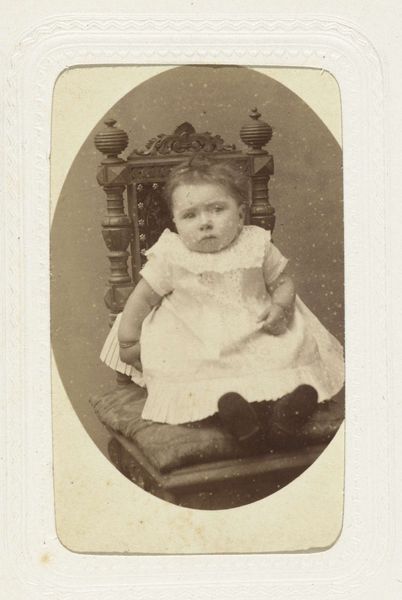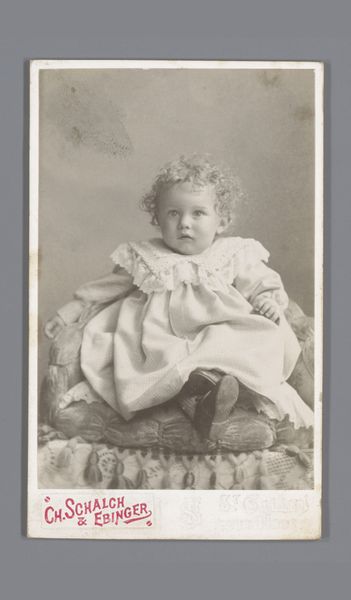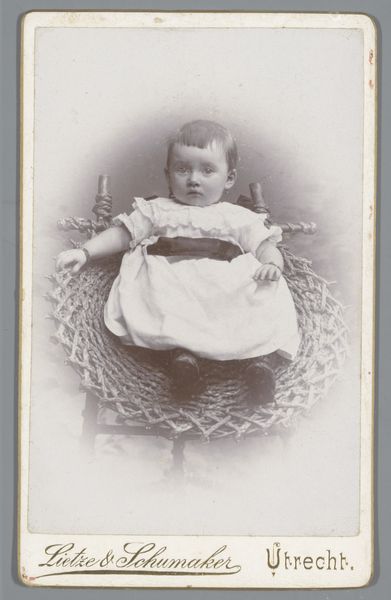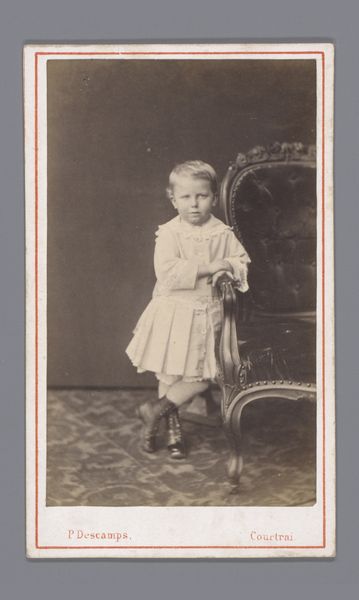
paper, photography, gelatin-silver-print
#
portrait
#
paper
#
photography
#
historical photography
#
gelatin-silver-print
Dimensions: height 88 mm, width 57 mm, height 104 mm, width 61 mm
Copyright: Rijks Museum: Open Domain
Editor: This is a gelatin-silver print, titled "Portret van Aafje Nooij," taken around 1908 by Johannes Laurens Theodorus Huijsen. It’s a charming, somewhat formal portrait of a young child. What strikes me is the child’s stillness, almost a frozen moment. What do you see in this piece? Curator: Beyond the apparent simplicity of a child’s portrait, I see a commentary on the rigid social expectations placed on women, even from a young age. This photograph, taken in a specific historical context, represents how young girls were meticulously dressed and posed, reflecting societal ideals of purity and obedience. Consider the layers of lace, the constrained posture – do these not symbolize the limitations imposed upon women? Editor: That's interesting. I hadn’t really thought about it that way. I was focusing more on the composition itself and how the clothing reflects the aesthetics of the period. Is it a critique, or simply a documentation of the style of the time? Curator: That's a crucial question. I believe it exists on a spectrum. On the one hand, yes, it documents the prevalent fashion and photographic practices. But on the other hand, the very act of preservation – framing this girl within these constraints – inadvertently exposes the power structures at play. The photograph, thus, becomes a potent tool for examining gender roles of the era. Consider the gaze – is there a hint of defiance, a questioning of the performative role being thrust upon her? Editor: Now that you point that out, I do see something different in the child’s expression. This makes me think about contemporary beauty standards and how those impact young girls today. Thanks, that was insightful! Curator: Indeed! Recognizing these visual cues allows us to critically engage with both historical and present-day constructions of femininity and representation.
Comments
No comments
Be the first to comment and join the conversation on the ultimate creative platform.
